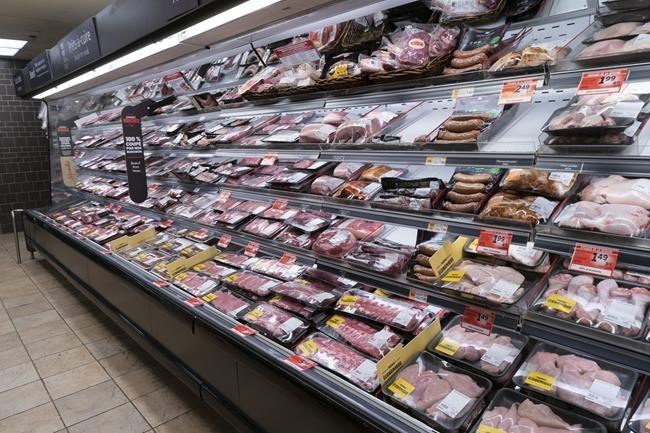HALIFAX — Grocery shopping is taking a bigger bite out of the pocketbooks of Canadians, with new research suggesting supply chain issues and adverse weather conditions are driving up food prices and changing how Canadians shop for groceries.
A survey released Wednesday by Dalhousie University’s Agri-Food Analytics Lab in partnership with Caddle said food prices are on track to rise nearly five per cent this year.
"Every section of the grocery store is impacted by inflation — there's not one single section that has not been impacted," said Sylvain Charlebois, director of the lab and a professor at the Halifax university. "Typically you would talk about cauliflower or beef or tomatoes. This year it's different products across the board."
The rising cost of groceries is shifting consumer behaviour, with more Canadians checking weekly flyers, using coupons, buying grocery-store brands and seeking out food that has been reduced in price because it's close to the expiry date, the poll found.
"The big one that I was surprised about is that 40 per cent of Canadians are actually looking for discounted food products," he said. "More and more Canadians are looking for these 'Enjoy Tonight' discounts."
Meanwhile, Statistics Canada figures show meat prices are up as much as 10 per cent in the last six months, a situation the survey said has prompted nearly half of Canadians to report reducing the amount of meat they buy.
"People are in sticker shock at the grocery store," Charlebois said. "Some cuts have actually gone up by as much as 30 per cent since January."
In addition, the poll said about three-quarters of Canadians have noticed so-called shrinkflation, the reduction in the amount of food in a package to adjust for inflation without raising prices.
The shrinking-package strategy leaves consumers with less for their money for everything from cookies and chips to cheese and orange juice.
The survey also found that while 86 per cent of all Canadians believe food prices are higher than six months ago, that observation was highest among the baby boom generation with 93 per cent noticing higher food prices.
One possible silver lining is that the price between organic and conventional items is shrinking in some cases, Charlebois said.
Looking ahead, he said food prices are expected to remain elevated as shipping, labour and other input costs are projected to remain high.
This report by The Canadian Press was first published Sept. 29, 2021.
Brett Bundale, The Canadian Press

